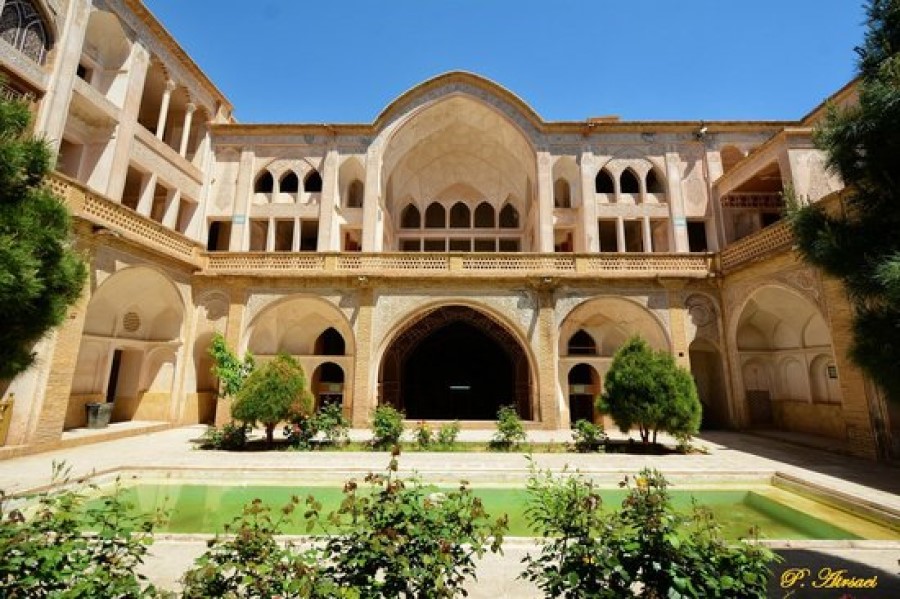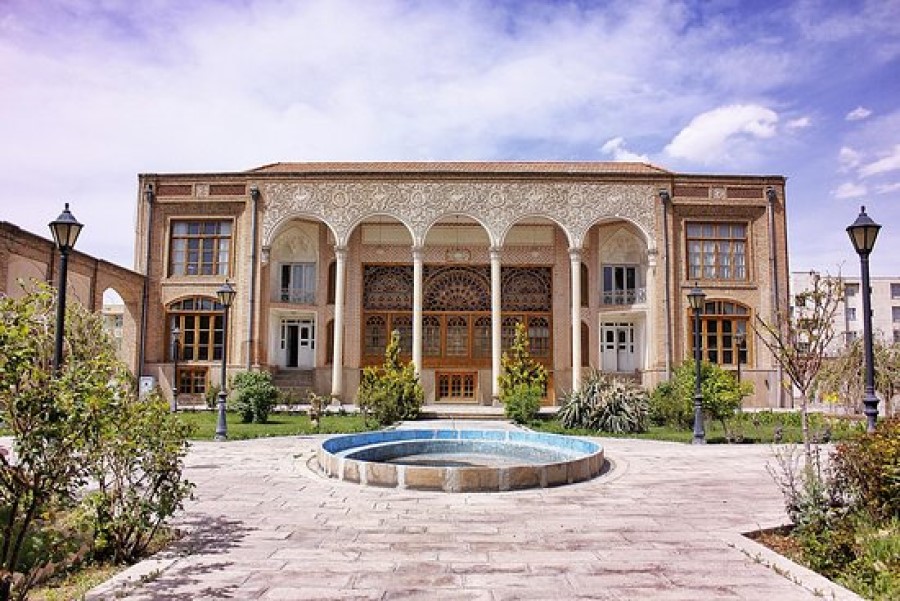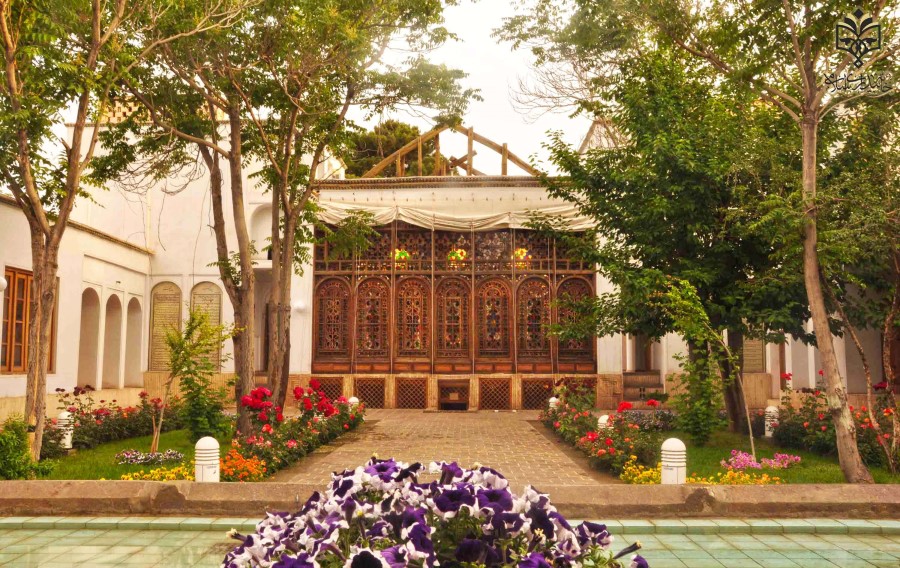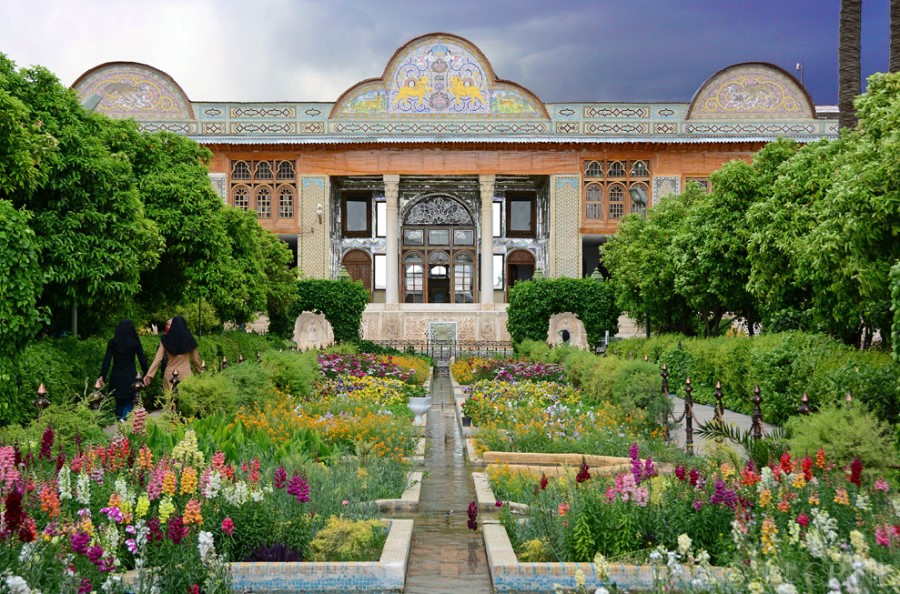One of the popular tourist activities and things to do in Iran, is visiting Iran Historical houses. Almost in all Iranian cities you can find some amazing examples of Persian Historic houses from Tabatabei house in Kashan to Qavam house in Shiraz. All shows the fact how skillful were Iranian in architecture and construction.
Iranian houses usually come with Persian gardens, meaning ancient Iranian liked to surrounded their house with beautiful gardens. the architecture makes use of abundant symbolic geometry, using pure forms such as the circle and square, and plans are based on often symmetrical layouts featuring rectangular courtyards and halls.
You may be surprised if you know that the design of the Taj Mahal in India is significantly inspired by Persian architecture. Let’s do not wait and take a look at the 9 top historic houses in Iran.
Iran Traditional Houses
Kashan Historical Houses
Tabatabaei House

The Tabatabaei House, one of the most remarkable Iran historical houses, was built in the early 1880s for the affluent Tabatabaei family. It consists of four courtyards, wall paintings, elegant stained glass windows, and other classic features of traditional Persian residential architecture. It was designed by Ustad Ali Maryam, architect of the Borujerdi House and the Aminoddole Caravanserai of the Bazaar of Kashan.
Beyond the clay walls, there are some amazing enclosed! There you can find magnificent buildings with beautiful stained glasses and a courtyard!
Tabatabaei House has seven windows toward the courtyard. while the other houses in Kashan had only three to five ones at those period. Besides, the building has four courtyards, the biggest has a pond with fountains.
In addition, the house consists of the interior part (andaruni) for the family members and the exterior part (biruni) for strangers. In fact, gardens and ponds add charm to this beautiful historic place.
Abbasian House

Kashan’s Abbasian House is known locally as the Khane-e Abbasi. This old mansion in Kashan is not just a popular tourist destination, but it also provides dining experience in one of its courtyards.
A street corridor leads to this area, which is surrounded by a few tiny rooms. The Abbasian was erected by a rich businessman named Abbasi in the late 18th century. The Abbasi house is a complex of six structures stretched across many floors with six courtyards encircled by halls, iwans, and galleries. This structure’s beauty is enhanced with plaster reliefs.
Borujerdi House

There is a love story behind this magnificent home. Actually, a renowned merchant Sayyed Jafar Natanzi, known as Borjouredi, made this house to marry and live with the daughter of Tabatabaei.
In fact, one can name two distinct characteristics of this house as the six-sided, domed badgirs (wind catchers) and frescoes painted by the most renowned painter of the era Kamal al-Molk (1847-1940), the foremost Iranian artist of the time.
This house has also andaruni and biruni sections. It also has a courtyard with a fountain pool and a two-story iwan (terrace).stuccowork, glasswork, and mirror work fascinate you while visiting the place.
Read also: Kashan Travel Guide
Tabriz Historical Houses
Constitution House of Tabriz

This traditional house, as one of Tabriz’s attractions, was actually a gathering place for activists and leaders of the Constitutional Revolution in the early 1900s, which led to the establishment of a parliament in Iran during the Qajar era.
In fact, Haj Vali Memar Tabrizi constructed the house in two stories in 1868.
It was the place that national renowned figures like Sattar Khan and Baqer Khan held meetings with other members of the movement. You can find an exhibition of sculptures of Iranian constitution activists on the first floor. Their weapons and personal belongings, as well as the printing machine for their night letters and papers, are on display at the museum.
Behnam House

The Symmetrical architectural design is stunning in this house, Seems ancient architects used drafting elements skilfully for planning such a masterpiece. The construction of this building goes back to Zandiyeh Era (17th Century), while the renovation of building conducted at Qajar period (18-19th century).
Like many old Iranian houses, this house has two courtyards inside and outside and includes a main building as a winter building and a small building as a summer building.
Read also: Tabriz Travel Guide
Isfahan Historical Houses
Mollabashi historical House

Mollabashi house also known as Motamedi house is one of those Iran historical houses that must-visit. The history of this house goes back to the Qajar era when, it was purchased by Mollabashi from one of the
descendants of Qajar. The house is located in Malek Street, Isfahan-Iran.
This masterpiece of light and colors makes a fantasy atmosphere for photography. To see the dance of color and lights through stained glass windows, you need to visit the guest room area in the middle of day.
The beautiful interior design of entrance with mogharnas tiles, a polygonal room with a water pond in the middle for use in the summer, a rectangular big room with a mirrored and fresco walls designed to host, celebrate & reception of special guests.
Constitution House of Isfahan

The Isfahan Constitution House, also known as Khaneh Mashrouteh or Khaneh Haj Aqa Nourrollah, is a historical building on Neshat Ave in Isfahan, Iran, located adjacent to the Great Naqsh-e Jahan Square.
During the years leading up to the Constitutional Revolution in Iran. Following that, the home became a meeting site for the movement’s leaders, activists, and sympathizers. Later, this home was converted into a historical museum about Iran’s constitution period.
Read also: IsfahanTravel Guide
Shiraz Historical Houses
Narenjestan e Qavam House

Named after trees of bitter orange (Narenj), Narenjestan Garden was built between 1879 and 1886. In fact, Mohammad Ali Khan Qavam al-Molk, a wealthy merchant of the time, ordered this breath-taking garden.
It is interesting to know that this mansion is connected to nearby Zinat ol-Molk House via an underground passage. However, it is not open to the public.
Besides, the mirrored entrance hall of the pavilion, intricate tiles, and inlaid wooden panels of the rooms connected to it mesmerize you.
In addition, there is a museum in its basement. the American scholar Arthur Upham Pope (1969-1979) who taught at the Asia Institute in Shiraz collected them.
Shapouri Garden and House

Shapouri house, one of the iconic Iran historical houses, was designed by engineer Abolghasem Mohandesi and built between 1930 and 1935 (early Pahlavi dynasty in Persia); the owner was Abdolsaheb Shapouri.
Shapouri is known as unique and very innovative house, since you can see circular and designed gypseous columns and porches in the facade decoration. The unique and European architecture of this building distinguishes it from other Iranian historical houses. Shapouri mansion is very attractive at night, and its atmosphere is remarkable and memorable.
It has been renovated and in recent years by the private sector. Shapouri house and garden continue to function as a restaurant and coffee shop plus as a handicrafts and artworks exhibition.
Read also: Shiraz Travel Guide

